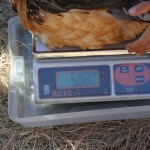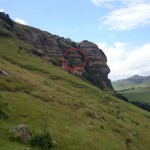The Maloti-Drakensberg mountain range is home to the only remaining population of southern African Bearded Vultures. Due to ongoing threats causing high death tolls, the population has been depleted to a critical level of just 350 birds.

The Maloti-Drakensberg Vulture project has instigated an extensive Bearded Vulture monitoring program, continually tracking individual birds via satellite transmitter units. As well as delivering valuable species research information, the data provided by these satellite transmitters enables us to identify causes of mortality’s and monitor the success of conservation efforts.
Sadly, the impact of the ongoing threats facing the vulture species of southern Africa has been reflected in the results of the Bearded Vulture satellite monitoring program. Since the beginning of the program in 2006, there have been 25 Bearded Vultures fitted with satellite monitoring units. 10 of these birds have since been killed by poisoning or collisions. That’s a shocking 40% of the birds included in the project.
The latest fatality was Lefuma, a magnificent adult breeding male Bearded Vulture who weighed in at over 5kg. He was fitted with a satellite transmitter in 2012, and chose to spend most of his time around the mountainous borderlines between Lesotho, Kwa-Zulu Natal, and the Free State.
That was until the last week of February 2014, when researchers became concerned that Lefuma’s transmitter had not moved in over 24 hours. A team of research technicians and field rangers set about on a recovery mission towards where the stationary unit was transmitting from, near Witsieshoek in the Freestate. The signal from the satellite transmitter led the team to the base of the cliff, and Lefuma’s dead body was visible resting on a grassy ledge. It took 6 hours to reach and retrieve his body, requiring technicians to use ropes to navigate rock faces and 40 metre cliffs.
His big, feathery carcass gave many clues to what caused his untimely death. He was positioned in the characteristic face-down, wings-spread posture of poisoned vultures before him, and next to him lay a fresh, uneaten leg of a goat. All evidence indicates that this was yet another case of vulture poisoning, although test results need yet to confirm this. Update: see the confirmed lab results. The loss of a breeding adult is another big blow for the already declining population of Bearded Vultures in Southern Africa.
Poisoning accounted for the death of 1440 of our vultures in southern Africa last year. When you consider that one of those species has a population of just 350 birds, the urgency of the crisis that we face is obvious.
Being solitary animals, Bearded Vultures tend not to feed at a carcass alongside other scavengers, preferring to carry meat away and eat it in safe privacy. It is suspected that this is what happened in Lefuma’s situation. A goat carcass was illegally laced with poison, intending to cruelly target ‘pest’ species, such as jackal. Lefuma took the opportunity of a meal, and carried a leg of the carcass to the grassy ridge on the cliff to eat in ‘safety’. His death would have been quick but far from painless, with the poison acting as a neurotoxin, causing paralysis of his breathing muscles and suffocation.
The Maloti-Drakensberg Vulture Project works to implement effective research, education, protection, public awareness, conservation and recovery operations in order to prevent further Bearded and Cape Vulture population declines, and to ensure a future for this vital ecological component in southern African skies. It is a long term recovery project, requiring dedicated monitoring programs, the implementation of conservation actions, as well as public awareness and support.
Find out how you can contribute to the conservation activities of the Maloti-Drakensberg Vulture Project.













